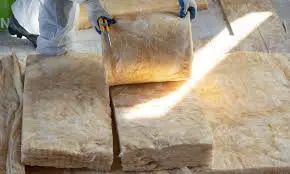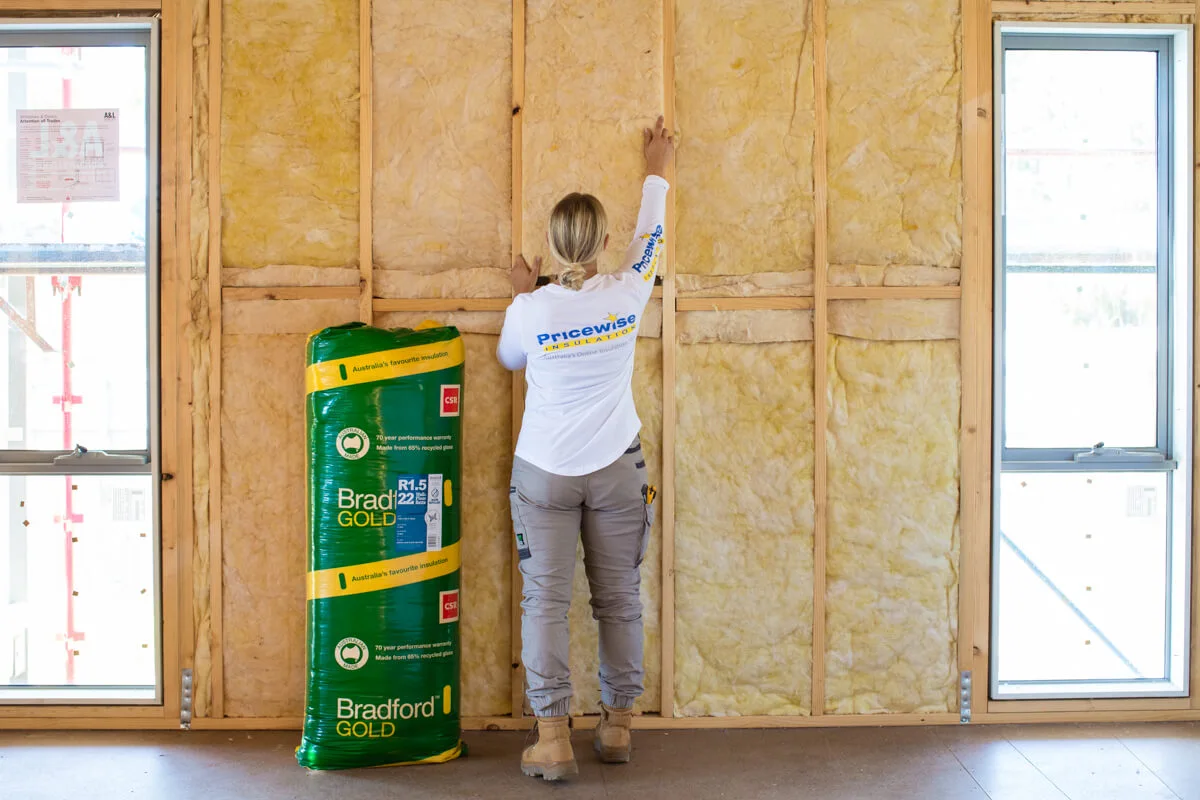
What are Batt insulation tips and tricks?
This introduction will explore batt insulation, its benefits, and how it can be used effectively.
Batt insulation consists of flexible fibers, such as fiberglass, mineral wool, or natural fibers, tightly packed into rectangular panels or rolls. The tightly packed fibers trap pockets of air, which help reduce heat flow through the building envelope.
One of batt insulation's main advantages is its ability to enhance thermal efficiency, keeping buildings warmer in the winter and cooler in the summer. Batt insulation minimizes energy costs by reducing heat transfer through floors, walls, and ceilings.
Batt insulation can also improve building soundproofing by absorbing and dampening sound vibrations. This is particularly beneficial in multi-family dwellings or buildings located in noisy environments.
Batt insulation is versatile and can be used in various building areas, including walls, floors, and attics. It is relatively easy to install, making it a popular choice for both new construction and retrofitting existing buildings.
Understanding Batt Insulation Materials
Batt insulation materials come in various forms, each with unique properties and benefits. This article will discuss the different types of materials used in batt insulation, their characteristics, and how they contribute to energy efficiency and comfort in buildings.
Fiberglass: It is one of the most common types available. It consists of fine glass fibers bonded together with a thermosetting resin. Fiberglass insulation is lightweight, fire-resistant, and offers excellent thermal performance. It is also non-combustible, making it a safe choice for building use.
Mineral Wool: Rock or slag are artificial or natural minerals used to make mineral wool batt insulation. It is known for its high fire resistance, sound absorption capabilities, and resistance to moisture and pests. Mineral wool insulation is dense and provides effective thermal insulation, making it suitable for walls, floors, and ceilings.
Natural Fibers: Batt insulation made from natural fibers, such as cotton, sheep's wool, or cellulose, is an eco-friendly option. These materials are renewable, biodegradable, and often sourced from recycled materials. Natural fiber insulation offers good thermal performance and is free from harmful chemicals, making it a healthy choice for indoor environments.
Synthetic Fibers: Synthetic fiber batt insulation, such as polyester or polyethylene, offers durability, moisture resistance, and ease of installation. These materials are frequently utilized in wet environments like crawl spaces and basements. Synthetic fiber insulation's thermal insulation capabilities are dependable and lightweight.
Property owners may choose the ideal solution for their needs and budget more quickly if they know the different materials used in batt insulation. Whether affordable fiberglass, mineral wool for fire resistance, or natural fibers for sustainability, there's a batt insulation material to meet every requirement.

Mastering Measurement and Cutting Techniques for Batt Insulation
Proper measurement and cutting techniques are essential for ensuring the effectiveness and efficiency of batt insulation installation.
Measure Twice, Cut Once: Measuring the space where the insulation will be installed accurately is crucial before cutting any insulation material. Measure the area's length, width, and height, accounting for obstructions such as pipes or electrical wiring. Double-checking measurements helps minimize waste and ensures a precise fit.
Use a Straight Edge and Utility Knife:
When cutting batt insulation, guide your utility knife with a straight edge, such as a ruler or T-square.
Score the insulation along the desired cut line, then snap it along the scored line for a clean cut.
Avoid using serrated blades, which can tear the insulation and result in uneven edges.
Cut Slightly Larger: Cut the batt insulation slightly larger than the measured space to achieve a snug fit. This allows the insulation to compress slightly when installed, filling gaps and maximizing thermal efficiency. However, be cautious to keep it manageable, as excessive compression can reduce insulation effectiveness.
Wear Protective Gear: When handling insulation materials, always wear appropriate protective gear, including gloves, long sleeves, and a mask to prevent irritation from fiberglass or dust particles.
Insulate Around Obstacles: When encountering obstacles such as electrical outlets, pipes, or ductwork, carefully cut and fit the insulation around them to maintain continuity and coverage. Use a serrated knife or insulation saw to trim the insulation for a precise fit.
By following these proper measurement and cutting techniques, you can ensure a seamless and efficient batt insulation installation, maximizing energy savings and indoor comfort in your home or building.
Top Tips for Batt Insulation Success
Installing batt insulation correctly is essential for maximizing energy efficiency and comfort in your home or building. Here are some expert tips to ensure a smooth and effective installation process.
Start at the Top: When insulating walls, begin at the top and work your way down. This allows gravity to help hold the insulation as you install it. Please start at the furthest point from the access hatch or entrance for ceilings or attics and work towards it.
Cut to Fit: Measure and cut each insulation piece accurately to fit snugly between studs, joists, or rafters. Use a straight edge and utility knife for clean cuts, ensuring the insulation fills the cavity without gaps or compression.
Fluff and Flare: Before inserting batt insulation into walls or cavities, fluff it to its total thickness and gently flare out the edges. This helps the insulation maintain its full R-value and ensures it reaches all corners and edges for maximum effectiveness.
Maintain Vapor Barriers: Ensure the vapor barrier is sealed correctly to minimize air leakage.
Don't Block Ventilation: Avoid blocking eaves or soffit vents when insulating attics to maintain airflow and prevent moisture buildup. Baffles or chutes should be used to keep insulation away from vents while providing adequate coverage.
Seal Air Leaks: Inspect the building envelope for gaps, cracks, or holes before installing insulation. This helps prevent air leakage, improving energy efficiency and indoor air quality.
Steer Clear of Errors: Common Mistakes to Dodge During Batt Insulation
Navigating through a batt insulation project can be smoother by sidestepping common mistakes that might compromise effectiveness. Below are vital blunders to evade during installation for optimal insulation performance:
Inadequate Measurement: Skipping precise measurements of the installation area often leads to improperly sized insulation pieces, leaving gaps or over-compression, hindering thermal efficiency.
Ignoring Air Sealing: Neglecting to seal air leaks before insulation installation allows warm or cool air to escape, diminishing energy efficiency. Prioritize sealing gaps, cracks, and penetrations to optimize insulation performance.
Compression Overload: Overstuffing batt insulation into cavities can compress the material, reducing its insulating properties. Ensure a snug fit without excessive compression to maintain the desired R-value.
Vapor Barrier Mishaps: Failing to install a vapor barrier in moisture-prone areas like basements can lead to condensation issues and mold growth. Always include a vapor barrier where necessary to prevent moisture infiltration.
Incorrect Installation Orientation: Installing batt insulation with the vapor barrier facing the wrong direction can trap moisture within the building envelope, causing damage over time. Ensure the vapor barrier is positioned according to manufacturer guidelines.
Disregarding Safety Precautions: Ignoring safety gear such as gloves, goggles, and respirators increases the risk of irritation, respiratory issues, or injuries from insulation materials and tools. Prioritize safety to protect yourself during installation.
Rushed Installation: Hasty installation may result in poorly fitted insulation, gaps, or missed air sealing opportunities. Take the time to install batt insulation carefully and accurately for optimal performance.
Neglecting Professional Assistance: Complex insulation projects or unfamiliarity with proper installation techniques may warrant professional assistance. Seeking expert advice or hiring insulation contractors can ensure a successful outcome.
FAQs
How do I determine the right thickness of batt insulation for my home?
Ans: The thickness of batt insulation depends on factors like climate, desired R-value, and building codes.
Can batt insulation be installed over existing insulation?
Ans: Yes, batt insulation can sometimes be installed over existing insulation.
What distinguishes faced batt insulation from unfaced batt insulation?
Ans: Faced batt insulation has a vapor barrier attached, while unfaced batt insulation does not. Faced insulation is typically used in areas with high moisture levels, like bathrooms, while unfaced insulation is more versatile and suitable for other areas.
Are there any safety precautions I should take when installing batt insulation?
Ans: Yes, to prevent irritation from fiberglass fibers, safety precautions include donning gloves, a mask, and protective clothes. Ensure proper ventilation and follow manufacturer guidelines for safe handling and installation.
How do I address gaps and voids when installing batt insulation?
Ans: To address gaps and voids, carefully measure and cut the insulation to fit snugly into cavities. Use pieces of insulation to fill smaller gaps and seal larger voids with foam insulation or caulk. Ensuring a tight seal helps maximize insulation effectiveness.
Conclusion
To maintain a healthy indoor environment, keep vents clear of obstructions and consider installing or upgrading ventilation systems.
Increase the efficiency and lifespan of your batt insulation by adhering to these maintenance recommendations.
CALL US ANYTIME (720) 619-8255 as we ensure long-term energy savings and indoor comfort for your home or building.
Reach Out To Spray Foam Insulation Westminster
Delivering Quality Insulation Solutions in Westminster, Colorado
Call us today!